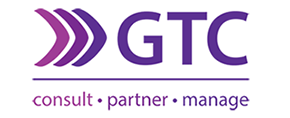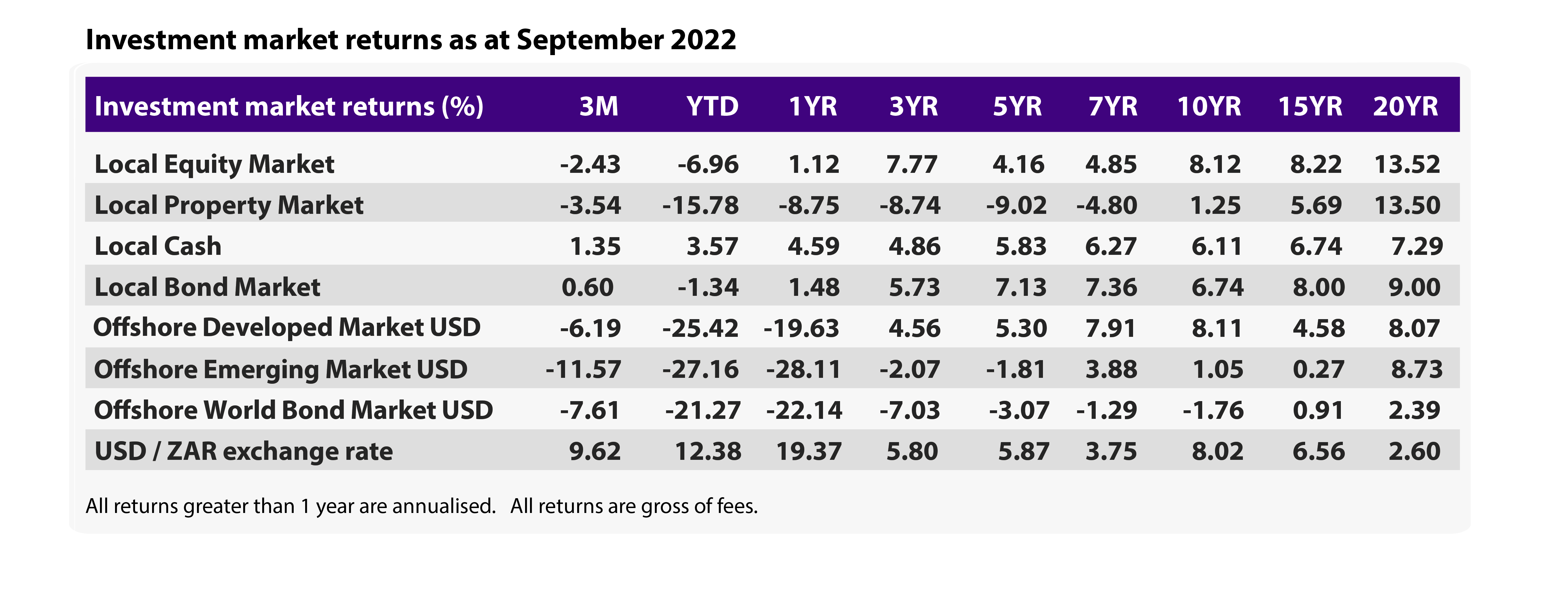Market Overview
In-depth market commentary detailing market performance over the quarter
The quarter ending September 2022 has been another challenging period for global investment markets as they continued downward. Considerable market volatility and uncertainty have endured amid subdued global trade expectations and global recessionary fears. Increasingly restrictive monetary policies from global central banks – given their concerns around longer lasting inflation – have kept markets in a tailspin.
-
- The local equity market (-2.43% in ZAR terms) outperformed developed (-6.19% in USD terms) and emerging markets (-11.57% in USD terms) over the quarter. The local equity market lagged both peers in rand terms as the strong demand for US dollars weakened the rand-dollar exchange rate by 9.6% over the quarter. Nonetheless, the dollar strength benefitted South African companies with predominantly foreign earnings (rand hedge shares) relative to companies with predominantly local earnings.
-
- Global inflation signals persisted as demand continued to collide with supply shortages across the world. Russia’s continued invasion of Ukraine, high crude oil price and Europe’s energy crisis further exacerbated the situation. However it remains likely that inflation will abate to some extent in 2023, as we expect supply-side disruptions to be reduced.
-
- No reprieve was found in the global bond markets as rising geopolitical tension, and negative investor sentiment kept bond yields elevated.
-
- Investor fear was further intensified by the United Kingdom’s pension fund industry collapse scare during the last week of the quarter. The market’s negative reaction to the proposed policy changes saw the pound-dollar exchange rate approach parity and bond yields kick up unexpectedly high which necessitated the UK central bank stepping in and providing some support.
-
- The South African Reserve Bank (SARB) raised the repo rate by 1.50% to 6.25% over the quarter in their efforts to reduce inflation. August inflation (CPI) remained above the top end of the SARB’s target range (3% – 6%) coming in at 7.6%.
-
- The local bond market (ALBI) delivered marginally positive returns for the quarter of +0.60% behind local cash (STEFI) at +1.35%, as increased bond yields pulled longer duration bond prices down.
It’s sometimes said that a pilot’s job entails hours of boredom interspersed by brief moments of terror. Investment markets are similar where short term chaos – such as that which we are currently experiencing – is viewed as white noise in the grander scheme of the normal market cycle. Staying invested in line with one’s investment objective is crucial – selling when markets are down locks in losses whereas staying invested allows one’s portfolio to not only recover losses but also gain when markets rally.
For further information on market movements please refer to GTC’s recent Q&A video publication here or tune in to our webinar on 1 November, where the GTC Asset Management team will unpack market events and GTC’s portfolio performances in greater detail.






